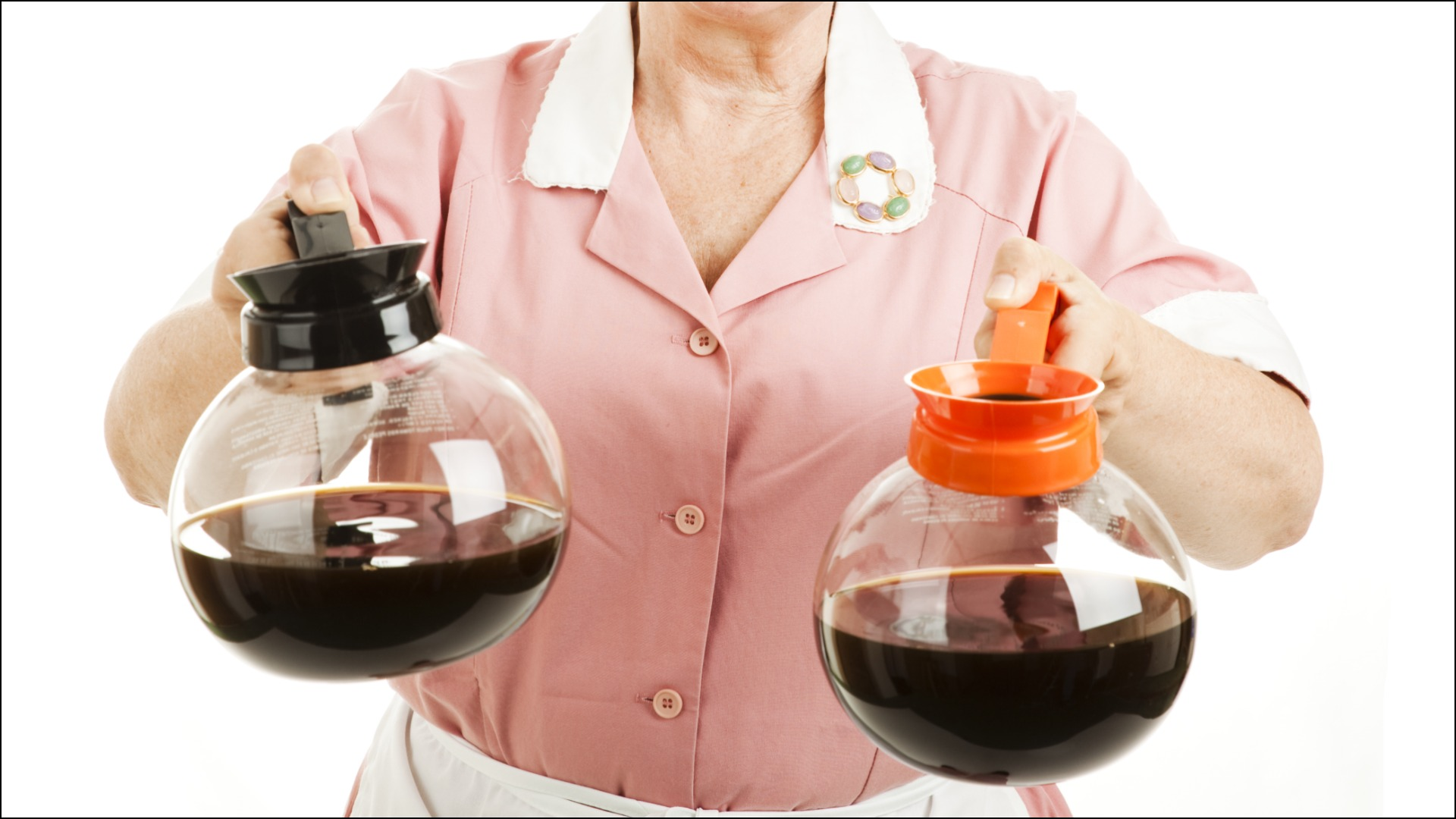How Orange Became The New Black For Decaf Coffee Pots
The orange handle always means decaf. The reason for this dates back almost a century.
"Regular or decaf, hon?" is the first question you'll hear after ordering coffee at a diner. The server will come over with one pot in each hand, one of which has a black spout, the other a bright orange one. I always point at the fully leaded variety, because as long as I can remember, I've known exactly which one is which. You do too, right? Orange = decaf. But why is the spout always orange and never any other color? Thanks to Mental Floss, I know the answer.
It turns out that all roads lead back to Sanka, an instant coffee brand that used to be among the leading decaf coffees around the world. I used to see Sanka commercials all the time when I was a kid; do any of you remember them?
A brief history of decaf coffee
Decaffeinated coffee was developed in Germany by a man named Ludwig Roselius, who led a team of researchers dedicated to finding out how to remove the jitter-inducing substance. After the process was discovered in 1900, the product was eventually sold in Germany and other European countries, The New York Times explains. The process of how decaf coffee is made is actually really fascinating—you can read more about it here.
In France, the decaffeinated coffee was called Sanka. The name is derived from the French words "sans caféine," and if you try to say that five times fast you'll see how the name was born. The Sanka label was bright orange, so the product was easy to spot if you were scanning a grocery store aisle. Sanka made its way to the United States in 1923.
The rise of Sanka
Eventually, Sanka was purchased by General Foods in 1932, a brand that has since merged with modern food giant Kraft. The company began a distribution push across the United States, employing some clever tactics to raise the profile of Sanka. General Foods sent coffeepots in Sanka's signature orange color to restaurants and coffee shops; its bright color meant patrons knew which pot to point to when ordering decaf. Eventually, the color became associated with decaffeinated coffee in general.
Of course, Sanka's not as popular now as it was back in the day, if only because there's more competition in the instant decaf market. I don't even remember the last time I even saw it on a shelf, do you? But at least now when I see a server holding an orange coffee carafe, I'll know that it's a throwback to a different era of coffee-drinking. Then I'll point to the other pot.
